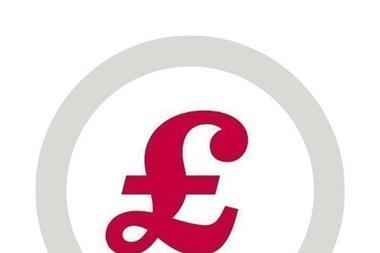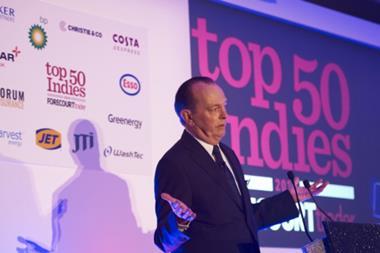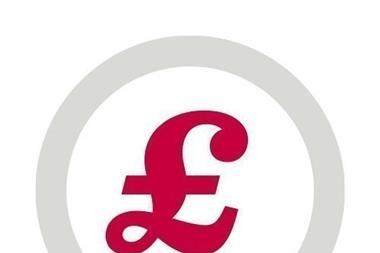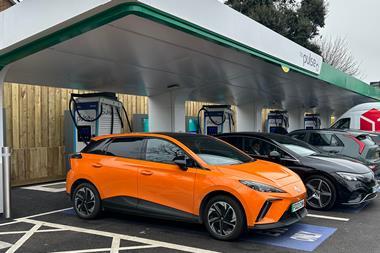A proposed fuel price watchdog, which has gained support from a group of backbench Tory MPs, could wipe out many independent filling station businesses. John Wood reports.

There is a saying that if something sounds too good to be true then it probably is too good to be true. However, when FairFuelUK suggested to MPs that it had a way of reducing fuel prices for their cash-strapped voters, a minority seem to have backed it without any understanding of what they were signing up for. Either that or they are so desperate for votes that they think throwing family-owned small filling station businesses under the bus is a price worth paying.
FairFuelUK has been around since 2011 and has consistently complained that fuel prices are too high. It’s a message that some tabloids and a handful of MPs have been only too happy to associate themselves with over the years, but other than helping to keep fuel duty frozen (a cause also campaigned for by many other groups) it has achieved little until now.
However, after the Competition and Markets Authority (CMA) announced it was going to investigate the road fuel market, FairFuelUK clearly believes the timing is right for its proposal for a fuel price watchdog called PumpWatch, and has wasted no time in circulating its blueprint for the new body in Whitehall. But while supporting MPs clearly find the proposal compelling the document is deeply flawed. Instead of reasoned argument backed up with documentary evidence, it is riddled with errors, beliefs asserted as facts and make-believe. The document portrays a market where “the small independent garage owner” is held to ransom by “fuel supply chain bullies”, but its plans for an Ofgem-style legislative watchdog with powers to set pump prices and margins could drive those same independents out of business.
Setting the scene
The document, written by FairFuel UK founder Howard Cox, begins by portraying a market where supply chain giants use mysterious and secret means to calculate pump prices and then tell retailers what to charge. It states: “For decades pump prices have been calculated using a secret formula known only to those businesses in the fuel supply chain. The pump pricing formula does not bear any close correlation to Brent Oil price movements, even after considering Dollar to Sterling exchange rate changes.” This is illustrated with a graph of falling Brent Oil prices at the end of last year and notes: “Yet pump prices remain stubbornly high.” In reality of course, retailers’ prices are for refined product, not crude oil, and they certainly don’t use a “secret formula” to set their prices.
Next it asserts: “When oil prices rise and fall, millions of drivers have absolutely no idea what subsequently, they will pay at the pumps each time they fill up their vehicles. It is never ever the same price! There is no consistency, logic or clarity to the way pump prices are calculated.” Again it asserts: “This calculation remains a closely guarded secret in the fuel supply chain.” But this ignores the fact that prices are displayed on large signs at every site and on pumps so any motorist has a clear idea of what they are paying, and can drive on to another site if the prices are not to their liking.
When it comes to clarity in calculating pump prices the wholesale price any site pays is commercially confidential, just as in transactions between retailers and wholesalers in any market. Like any other well-run business a petrol filling station will then calculate its selling price based on its buying price, and the margin it requires to cover its costs and make a commercial return. Retailers have little or no control over many of their costs and with massive increases in factors such as energy and wage bills, and losses due to theft, it is no wonder margins have had to rise.
Hammering home its obsession with “secrecy” the document continues: “FairFuelUK’s founder Howard Cox has documented pump pricing trends since 2010 and has tried to get to the bottom as to how petrol and diesel prices are reached. It remains a secret process designed to maximise profits for businesses in the fuel supply chain.” But there is no secrecy. All the parties involved in the market have made full disclosures to the CMA, and there is even free Platts Pricing Methodology & Markets training available online. Over the years representatives from the market have tried to engage with Cox to explain to him how it works but he still clings to his beliefs.
One sentence filling station owners will agree with is when the document states: “Please note well though, the small independent retailers are not the businesses making extra profits,” although he adds “it is further up the fuel supply chain where the greed is most rife”.
One of FairFuelUK’s biggest obsessions over the years has been the difference in price between petrol and diesel, and using graphs showing the variance between wholesale and retail prices for petrol and diesel it states: “Here is the latest example to date, in the seven weeks between Oct 10 and Dec 2, 2022, that shows the typical and continuing profiteering pattern from the avaricious unchecked fuel supply chain.” It continues: “Diesel is the commercial heartbeat of any nation. Yet in the UK, it remains the biggest victim of greedy market speculation, with the gap between derv and petrol growing hugely by the day. These fuel costs are putting a crippling strain on the viability of white van drivers and hauliers. Sixty five per cent of what’s dispensed from our forecourts is derv. I estimate that the current difference between petrol and diesel prices is still averaging a wallet busting 24p per litre. An all-time record difference that must not be accepted to any further extent, nor can this level of fleecing ever be acceptable by any government.” But the reasons for the differential have been well documented and have been exacerbated by shortages since supplies of Russian diesel were shut down. It also ignores the fact that drivers of commercial vehicles usually carry a fuel card which is priced much lower than pump prices.
PumpWatch Proposal
Having portrayed FairFuel’s take on the market, it then proposes a watchdog called PumpWatch should be set up. This would publish daily prices which filling stations would be expected to adhere to, and if this didn’t work on a voluntary basis it would be given legal powers to enforce them.
The first step would be bringing together “relevant groups” to consult on what PumpWatch should do and how it should operate, although who they would be is not specified. Then a PumpWatch Commissioner would be appointed, with a small team of analysts, but again there is no suggestion of who these people would be or where they would come from. Once it was operating participation would be voluntary, but it adds: “If voluntary participation does not result in fairer more transparent pricing at the pumps over a measurable period, then [there would be a] move to implement tighter regulation with legislative powers. Similar to Ofgem and other legislative watchdogs.” Quite apart from the catastrophic effect such price controls could have over an industry where two thirds of the participants are small independent businesses, the mention of Ofgem is unfortunate given it has overseen the collapse of 30 energy suppliers since mid-2021.
The proposal then enters fairy tale territory when it states: “Every single day, speculators, oil companies, their wholesalers in the fuel supply chain source up-to-the-hour data for the price of oil, and using dollar to sterling exchange rate figures, via their secret and erratic calculations, they arrive at the prices we pay at the pumps. They order their forecourt managers and owners to enforce their prices through restrictive tight contracts. In many respects the small independent garage owner is held to ransom by these fuel supply chain bullies.” Anyone who tries to order the owner of an independent business to adopt a certain price for their goods will receive a very robust refusal, quite apart from the fact that such price fixing by a supplier would be illegal.
How the watchdog would work
Getting into detail on how the watchdog would work, its greatest flaw is revealed when it states: “PumpWatch calculations will be based on bringing together all taxes, production and refining costs, biofuel component, delivery, distribution, fair retail margin agreed with petrol, diesel, and LPG supply representatives, greenhouse gas and development obligation.” Quite apart from an advanced capitalist nation imposing state-controlled pricing on thousands of independent businesses, how can anyone determine a fair retail margin when everyone of those independent businesses is going to have differing costs? And how do you account for the other players in the market – the big four supermarkets and the sites owned by oil companies – who can use their financial muscle to drive down many of their costs? This is a measure that could drive many independent sites out of business and these closures would leave many motorists having to drive miles just to fill up with fuel.
The document states that the wholesale price movements for petrol and diesel, plus other vehicle fuels, would be published daily. It would show the wholesale changes over 24 hours, 7 days, and 7 weeks. PumpWatch would also publish the average daily retail price alongside “the impartial and honestly calculated” watchdog price. It adds: “A PumpWatch fuel price movement index will become a new, fair, and transparent indicator of what is happening and should be the retail stimulus to honourably reflect imminent prices, drivers should expect to pay at the pumps.”
It also proposes a PumpWatch kitemark which sites will be able to display if they agree to a list of restrictions such as:
- retail pump prices must only change to fairly reflect retailers wholesale bulk fuel purchases;
- when a retailer receives a bulk fuel delivery, the follow-on retail pump price after that bulk delivery must follow closely the change in the wholesale price of the previous bulk delivery fairly, accurately, and timely plus VAT;
- pump prices cannot be changed until the next bulk delivery.
The kitemark would be backed up by an app so drivers could find their nearest kitemark site. The app would also enable users to report pricing irregularities and sites that failed the PumpWatch price change criteria woud be removed from the register and highlighted. There would also be a email / social media hotline to report unfair price changes that will be investigated by PumpWatch. No costing for all is given but it suggests fuel wholesalers and oil brands will be asked to pay based on the number of outlets they supply.
What happens now?
For anyone involved in fuel retail retail industry the PumpWatch proposal may sound ridiculous and the sort of thing any sensible minister or Whitehall mandarin would file in their bin. However, when we’ve had three prime ministers in six months, record fuel bills and a cost-of-living crisis, nothing seems certain any more. About 30 Tory backbenchers are backing this proposal and have made sure it has reached the business secretary and the Chancellor, who is due to deliver the Budget on March 15. Any filling station owners who live in the constituencies of the MPs backing this proposal might wish to get in touch with their elected representatives and inform them of the realities of the fuel market and the damage PumpWatch could cause to their livelihoods and the communities they serve.

































No comments yet